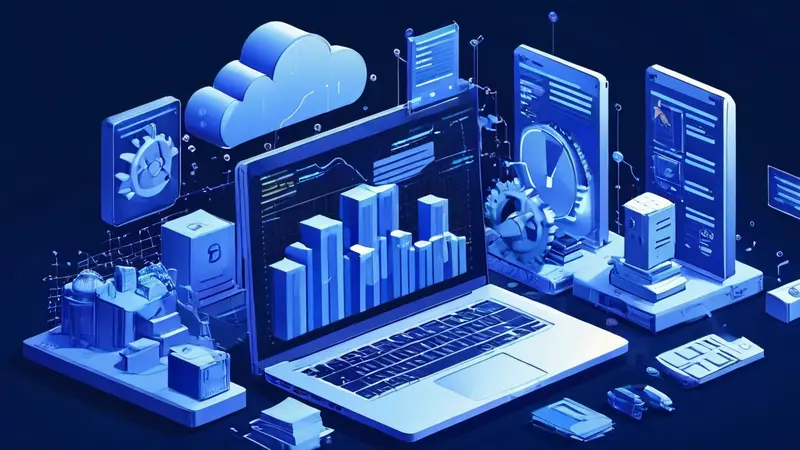The Internet of Things is profoundly changing the way we live and work, and its core lies in a wide variety of terminal devices. The editor of Downcodes will give you an in-depth understanding of the types, functions and applications of IoT terminal devices, helping you better understand the architecture and development trends of the IoT. The following will introduce key components such as sensors, radio frequency identification devices (RFID), smart terminals, and surveillance cameras in detail, and answer some common questions.

There are many types of terminal devices in the Internet of Things, including sensors, radio frequency identification devices (RFID), smart terminals, surveillance cameras, etc. These devices can realize the perception of the environment and control of objects by collecting information and receiving instructions. Radio frequency identification device (RFID) is a very critical terminal device in the Internet of Things. It can identify target objects and read relevant data through wireless communication technology. It is an important means to achieve automatic identification and data exchange. RFID is widely used in logistics tracking, identification, asset management and other fields. Its application improves the efficiency and accuracy of the Internet of Things system.
Sensors are the foundation and core component of the perception layer of the Internet of Things. They can monitor and detect a variety of physical or chemical conditions such as temperature, humidity, pressure, light intensity, etc. The types of sensors vary according to the monitored objects, including but not limited to temperature sensors, humidity sensors, pressure sensors, environmental quality sensors, etc.
Temperature sensors can be used in environmental monitoring, industrial production process control, and smart home systems. They provide real-time temperature data to ensure equipment is operating safely and optimally.
Humidity sensors are mainly used in agriculture, food processing, healthcare and other industries to monitor humidity levels in the air and ensure constant humidity in production and storage environments.
RFID technology uses radio waves for non-contact data transmission to achieve the purpose of identifying targets and reading and writing related data. It mainly consists of tags, readers and related application systems.
Tags are usually embedded or attached to objects and contain information about the objects. They are divided into active tags and passive tags. Active tags have their own power supply, while passive tags do not and need to be powered by a reader.
Reader is responsible for sending information to tags and receiving responses from tags. Through the reader/writer, the information stored in the tag can be captured and interacted with the back-end system for item tracking and management.
Smart terminals are the main devices used by individuals or business users to access the Internet of Things, and play the role of command input and information output in the Internet of Things system. Including portable devices such as smartphones, smart watches, and smart glasses, as well as home products such as smart furniture and smart appliances.
The combination of smartphones and the Internet of Things allows users to control and monitor various IoT devices in their homes or businesses anytime and anywhere, making life more convenient.
Smart home devices such as smart door locks, smart lighting and temperature control systems can be automatically adjusted according to user habits or remotely controlled to save energy and improve comfort.
As another key component in the Internet of Things system, surveillance cameras are used in fields such as security monitoring, traffic statistics, and remote services.
Security monitoring uses network-connected cameras to monitor houses and offices in real time to prevent intrusions and provide real-time alarms in emergencies.
Remote service cameras can also be used to provide remote diagnosis and treatment services. Doctors can observe the patient's condition through the camera and conduct remote consultation and guidance.
IoT terminal devices constitute the perception layer and execution layer of the entire system, and their functions and performance directly affect the breadth and depth of IoT applications. With the continuous advancement of technology and the reduction of costs, the terminal equipment of the Internet of Things will be more intelligent and diversified in the future, and be better integrated into daily life and industrial activities.
Question 1: What are the types of IoT terminal devices?
Answer: There are many types of IoT terminal devices, including smartphones, smart watches, smart speakers, smart cameras, smart home appliances, smart wearable devices, etc. These devices can connect to the Internet, interact with other devices, and achieve intelligent control and remote management.
Question 2: What are the application fields of IoT terminal equipment?
Answer: IoT terminal devices are widely used in various fields. In family life, intelligent control can be achieved through smart home devices, making the home environment more comfortable and convenient. In industrial production, IoT terminal devices can be used to monitor and control the production process, improving production efficiency and product quality. In urban management, IoT terminal devices can be used for traffic monitoring, environmental monitoring, smart parking, etc., to enhance the intelligence level of the city.
Question 3: What is the development trend of IoT terminal equipment?
Answer: With the development of science and technology, the development trend of IoT terminal equipment is becoming increasingly obvious. First of all, the intelligence of devices will continue to increase. More devices will have artificial intelligence and machine learning capabilities, and can learn and adapt to the environment independently. Secondly, the interconnection capabilities of devices will be strengthened, and communication and data interaction between devices will be more convenient and seamless. Finally, device security and privacy protection will become important development directions, and protecting user data and privacy will become the top priority.
I hope that the explanation by the editor of Downcodes can help you have a comprehensive understanding of IoT terminal equipment. As technology continues to develop, the Internet of Things will continue to bring more convenience and innovation to our lives.